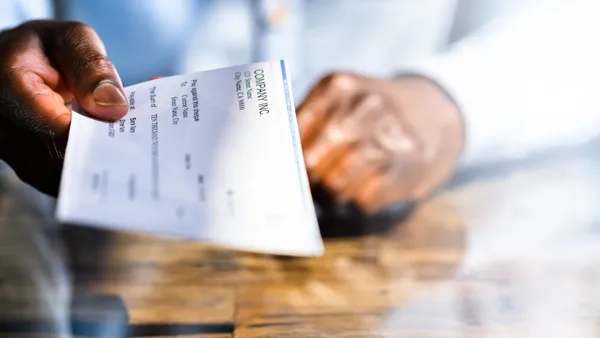Dive Brief:
- Pension plans among Standard & Poor's 500 companies rose to fully funded status last year for the first time in more than 10 years, but entered 2022 buffeted by high inflation and other headwinds, Goldman Sachs Asset Management said.
- "2021 was, without a doubt, a banner year for most [defined benefit pension] plans from a funded status perspective," Goldman said in a report. "The combination of higher interest rates and strong returns from risk assets allowed many plans to reach their highest funded levels in more than a decade."
- Still, "the path forward for plan sponsors may not be as easy" as in 2021, according to Goldman. "There is uncertainty related to inflation, interest rate volatility has increased, credit spreads are at historically tight levels and U.S. equity markets are trading near record highs."
Dive Insight:
The aggregate GAAP-funded status of U.S. corporate pension plans rose to 100% in December from 89% in December 2020, Goldman said.
Willis Towers Watson analyzed pension plan data from 361 Fortune 1000 companies and put aggregate funding levels in December at 96%, an increase of 8 percentage points compared with December 2020. "Strong investment returns and rising interest rates help[ed] to drive their aggregate funded status to its best level since before the 2008 financial crisis."
Companies will likely reduce pension plan risk in 2022, WTW and Goldman said.
"With funded status levels at their highest point in years, we expect plan sponsors will continue to de-risk by moving assets into fixed income and away from risk assets," Goldman said. "Opportunities to de-risk can be fleeting, so we generally suggest that plan sponsors consider moving down their glide path."
U.S. companies for decades have reduced interest rate risk and long-term obligations on their balance sheets by winding down defined benefit pension plans. Instead, they have offered employees lump-sum payments, spun off the plans to insurers as annuities and switched to employer-contributed 401(k)s, which are off the balance sheet and shift investment risk to workers.
"As plan sponsors move down a de-risking path by adding more money to long duration fixed income, we believe there will be interest in long-duration assets beyond traditional corporate and government bond funds," including private placement corporates, non-U.S. sovereign bonds and long-duration mortgages, Goldman said.
After the onset of the coronavirus in early 2020, many companies held on to cash by reducing the money they set aside to fund pension liabilities, increasing the gap between their long-term obligations and the money they must pay out as benefits.
The federal government in 2020 supported the reduction as part of pandemic relief by giving companies 15 years rather than seven to pay off plan deficits. Washington extended the provision in the bipartisan infrastructure bill approved in November.
Referring to future legislative relief, Goldman said, "we expect any additional measures to be relatively limited in scope."















